& Food Webs
Levels
Succession
Which level of organization is this salamander?
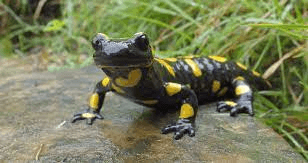
organism, population, community, ecosystem, biome, or biosphere
organism
This is a relationship where both organisms benefit from the relationship (they both get something good).
mutualism, commensalism, parasitism, or predation
mutualism
An organism that only eats animals (only eats meat) is called a ________________.
carnivore - or - omnivore
carnivore
In this food chain, what does the snake eat?
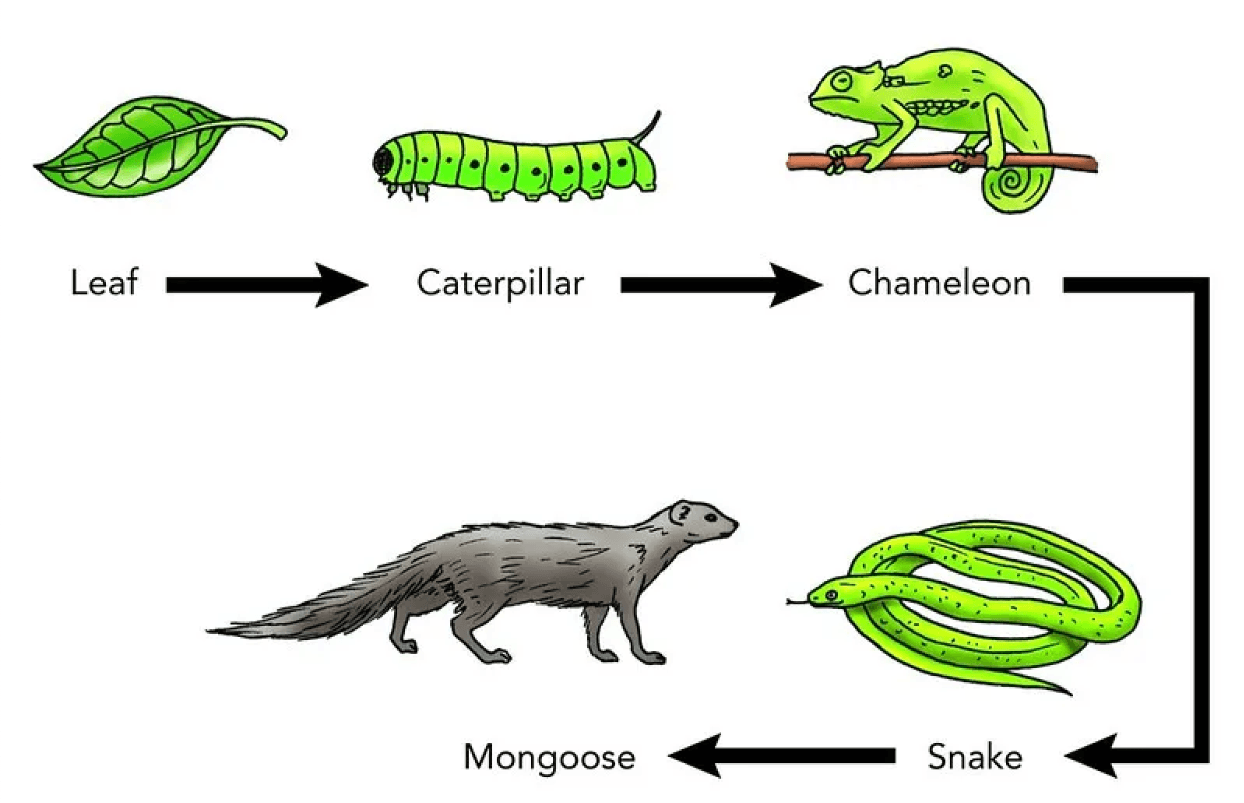
Chameleon
How many trophic levels are there?
2 or 3 or 4 or 5
4
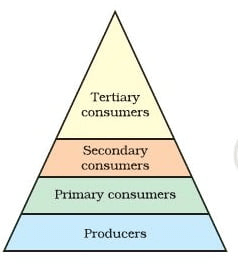
Which type of succession take more time?
primary succession - or - secondary succession
Primary succession takes about 1,000 years. Secondary succession takes about 50 to 200 years.
Which level of organization is shown in this photo:
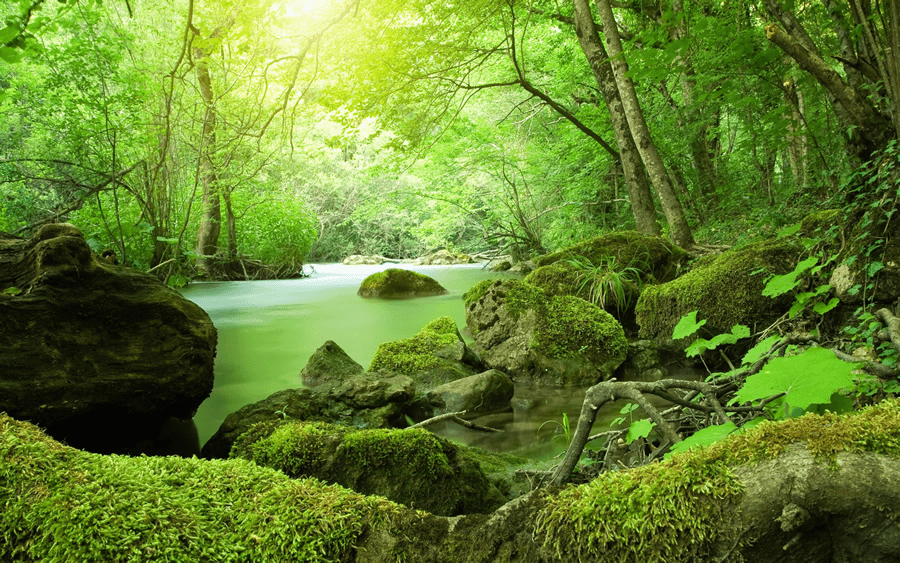
organism, population, community, ecosystem, biome, or biosphere
ecosystem
This is a relationship where one organism benefits from the relationship and the other organism is not affected in any way.
mutualism, commensalism, parasitism, or predation
commensalism
A grizzly bear eats berries and fish. What kind of organism is it?
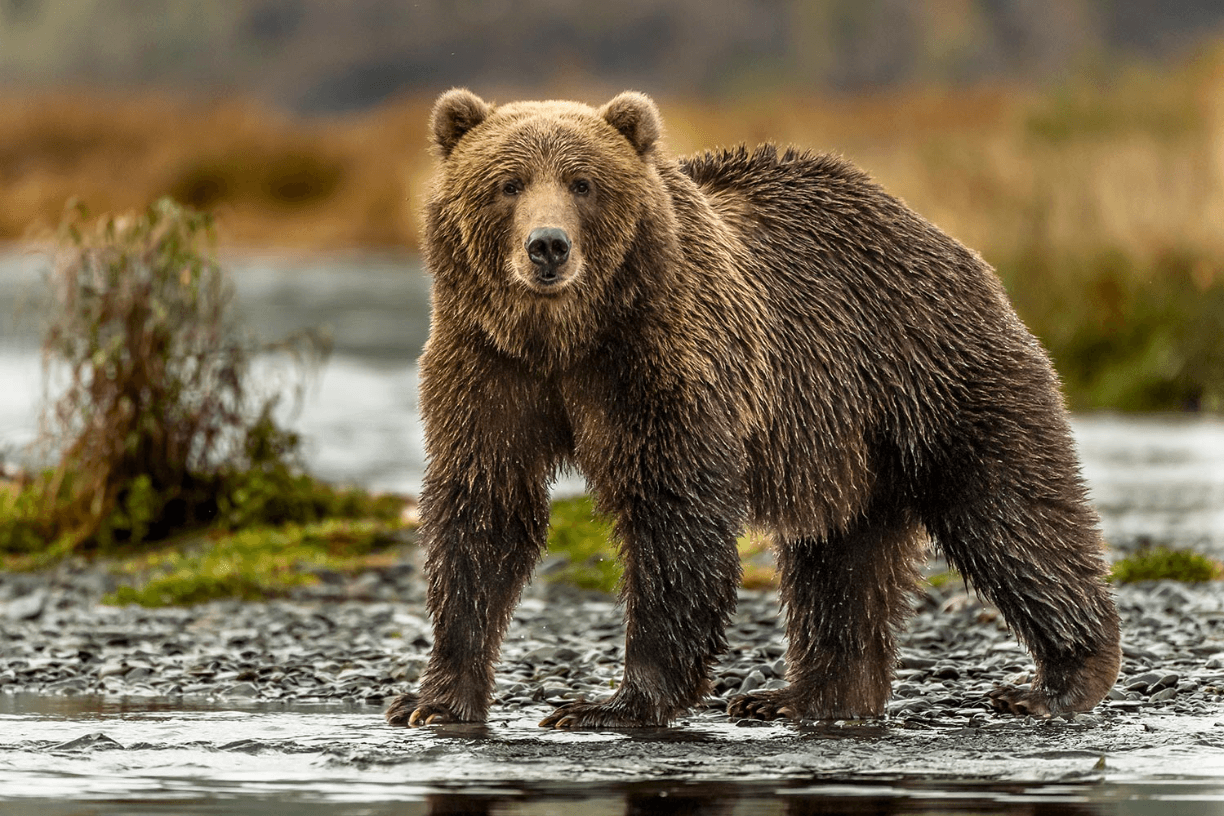
herbivore - or - carnivore - or - omnivore
omnivore
In this food web, what eats the snake?
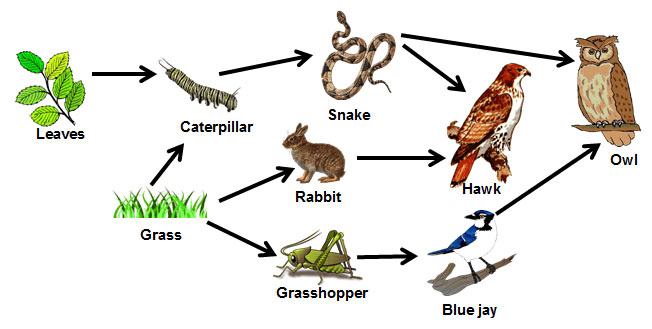
the Hawk and the Owl
The first trophic level (at the bottom of the triangle) is the ______________.
primary consumers - or - producers
producers
One main difference between primary and secondary succession is that in ____________ succession, there is still soil left on the ground.
primary - or - secondary
secondary
A population and a community are both living things in one area. The difference between them is that a population is just one ________________.
organism - or - species
species
In this type of ecological relationship, a prey is killed and eaten by another organism called a predator.
mutualism, commensalism, parasitism, or predation
predation
Earthworms, flies, and mushrooms are all examples of _______________.
decomposers - or - autotrophs - or - producers
decomposers
In this food web, if the rabbit population dies off, the carrot population will ______________.
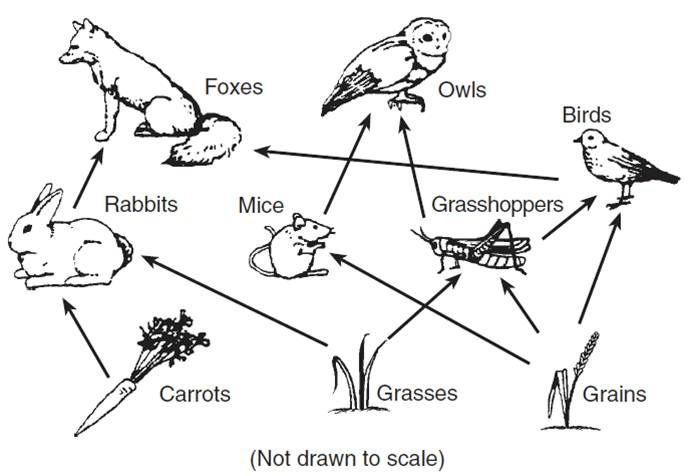
increase - or - decrease - or - stay the same
increase
This is the most important species in an ecosystem. If it disappears, the entire ecosystem is affected.
climax species - or - keystone species
keystone species
This vocabulary word means "anything that changes a whole ecosystem" and usually is something that damages or destroys the entire ecosystem.
succession - or - disturbance
disturbance
Which one is smaller?
biome - or - biosphere
biome
Which kind of ecological relationship exists between mosquitos and a humans?
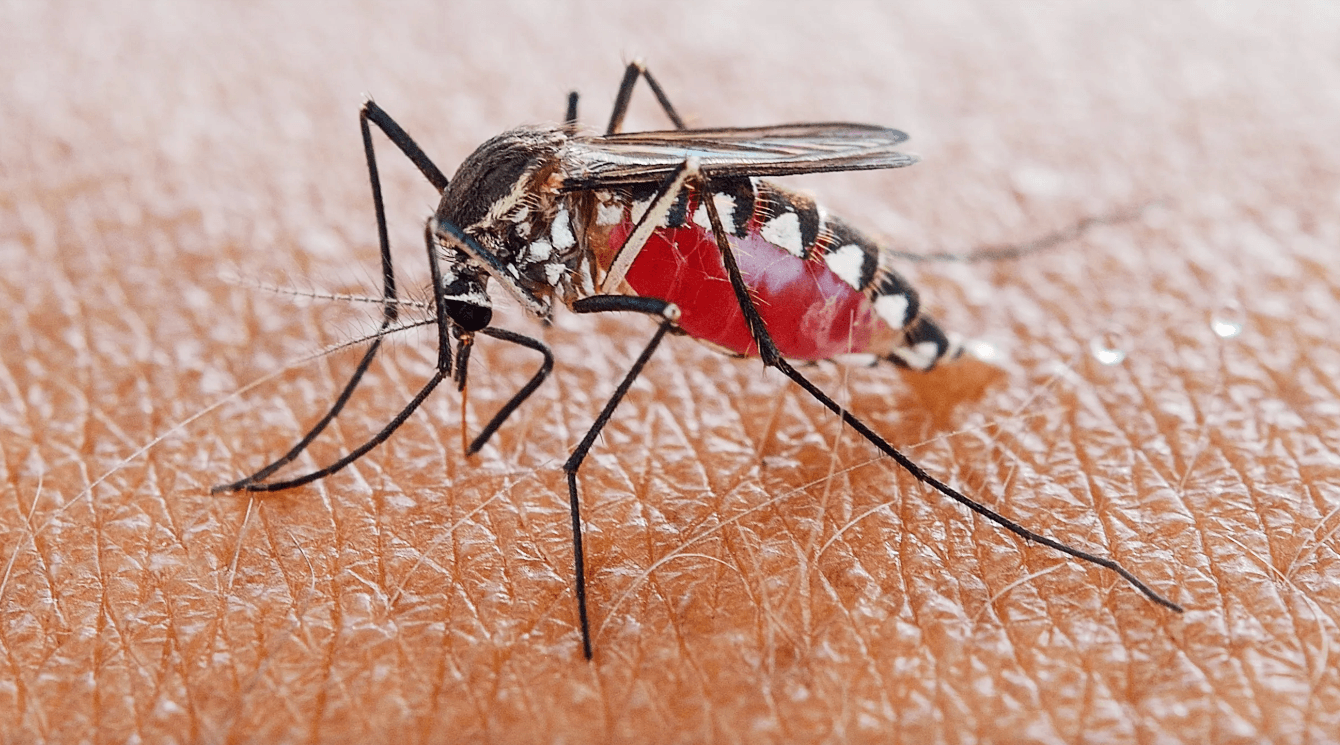
mutualism, commensalism, parasitism, or predation
parasitism
In this food web, which organisms are herbivores?
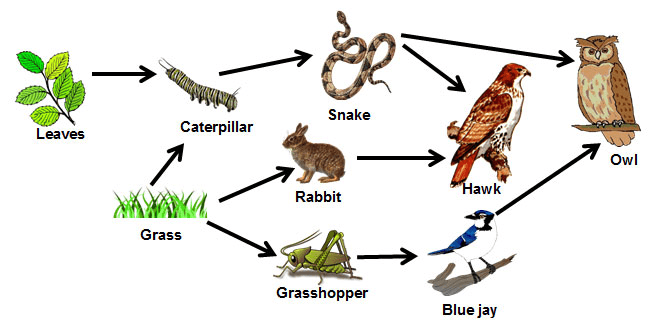
Caterpillar, Rabbit, and Grasshopper
All of the energy that living organisms on Earth use, all of it originally came from the __________.
sun
When there is a change to a top predator and that leads to changes all of the other trophic levels, we call this a trophic ______________.
cascade - or - disturbance
cascade
These organisms (usually moss, lichens, or algae) are the first organisms to grow during primary succession.
climax species - or - pioneer species
pioneer species
A community and an ecosystem both include all the living species in an area. The difference between them is that an ecosystem also includes the ___________ factors in the area too.
abiotic - or - nonliving
Which kind of ecological relationship exists between bees and flowering plants?
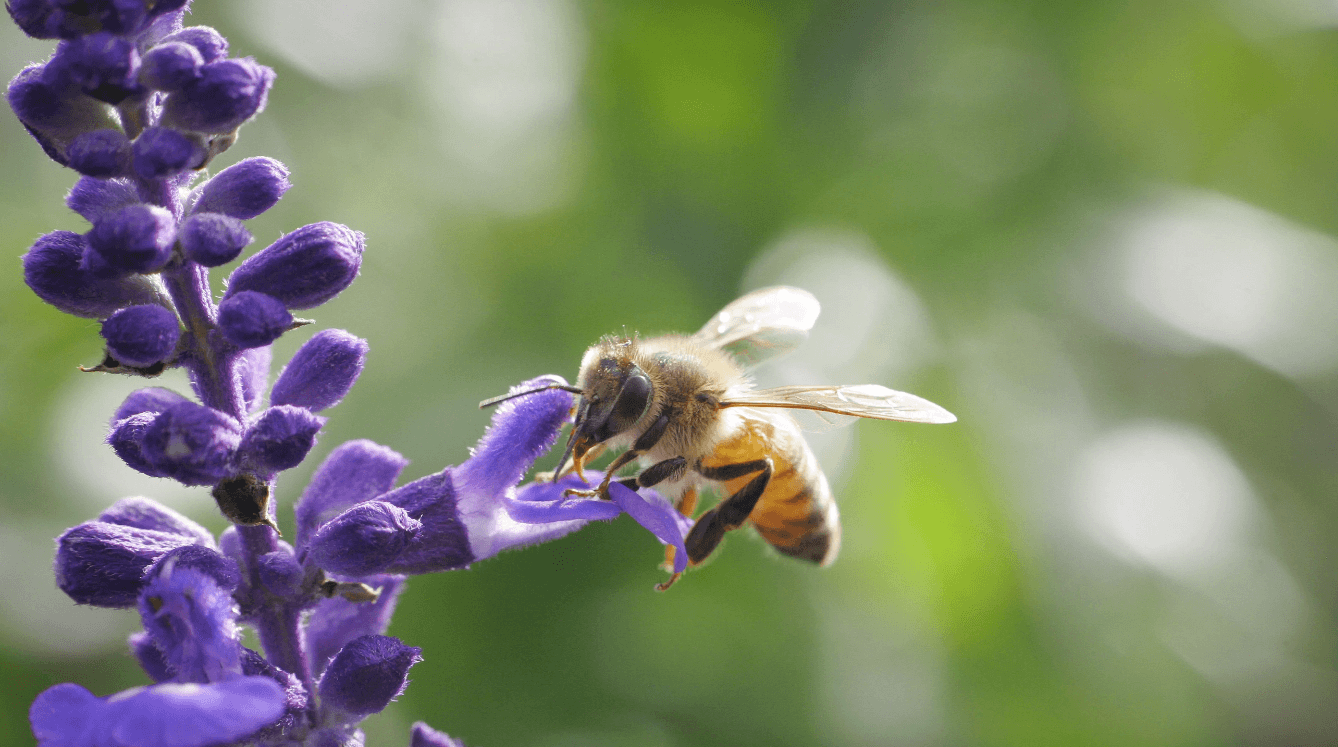
mutualism
This kind of organism has to get its energy by eating or absorbing food that is outside itself.
autotroph - or - heterotroph
heterotroph
In this food web, if the owl population dies off, the grains population will ______________.
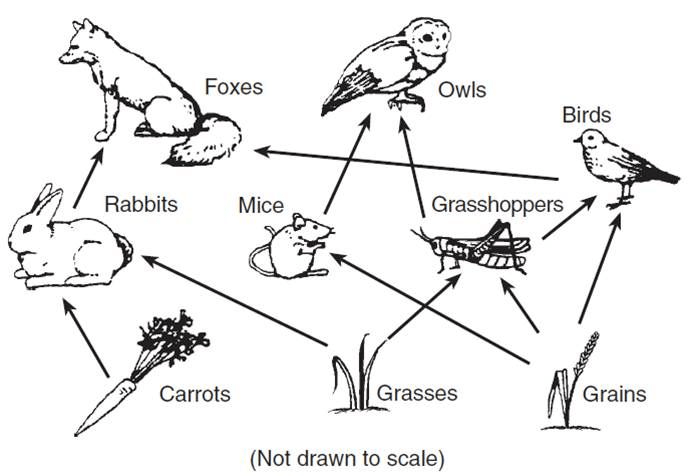
increase - or - decrease - or - stay the same
decrease
Biomagnification happens when there is a toxic substance that gets absorbed by the producers in an ecosystem, and it accumulates more and more in organisms at each trophic level so that the organisms at the tertiary level have the highest concentrations of the toxin in their bodies. In class, we learned about two examples of biomagnification. Name one of them.
Mercury in the Bay Area
- or -
The Pesticide DDT
At the end of both primary and secondary succession, when an entire ecosystem has completely grown back and has reached a state of balance again, we call this the __________ community.
climax